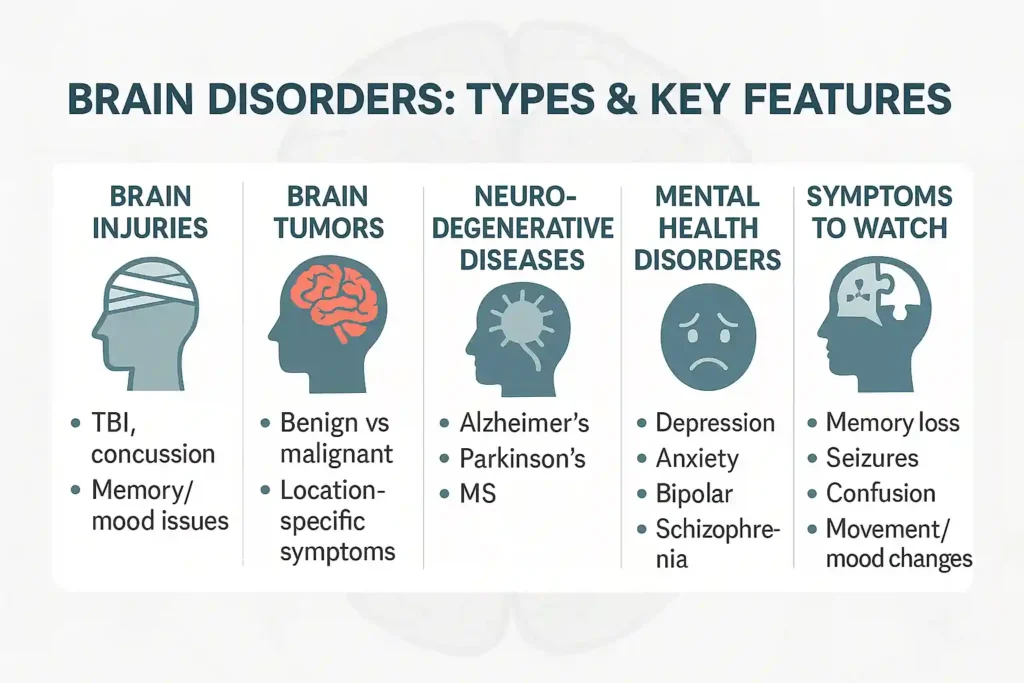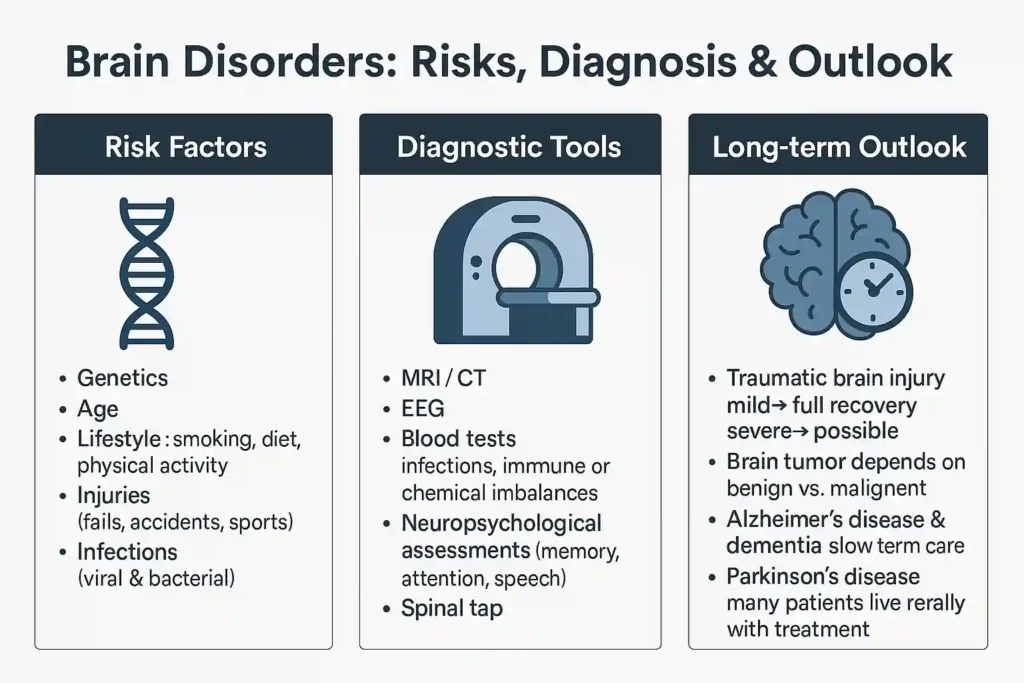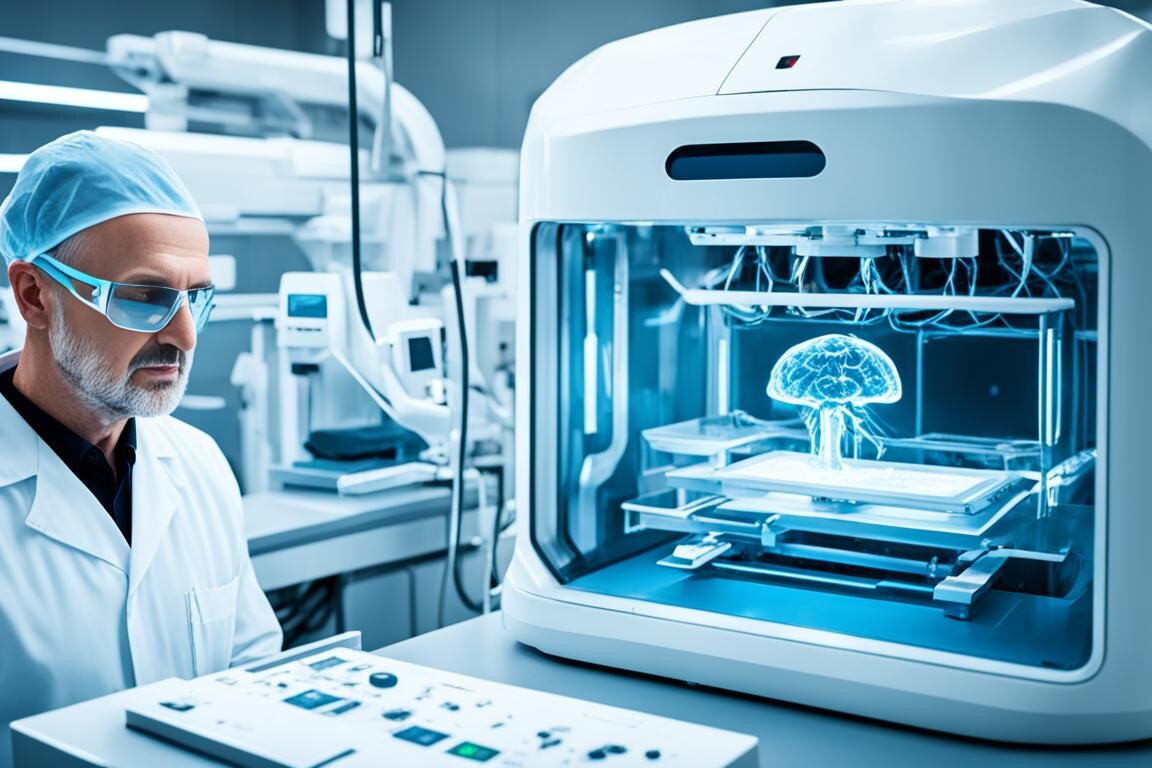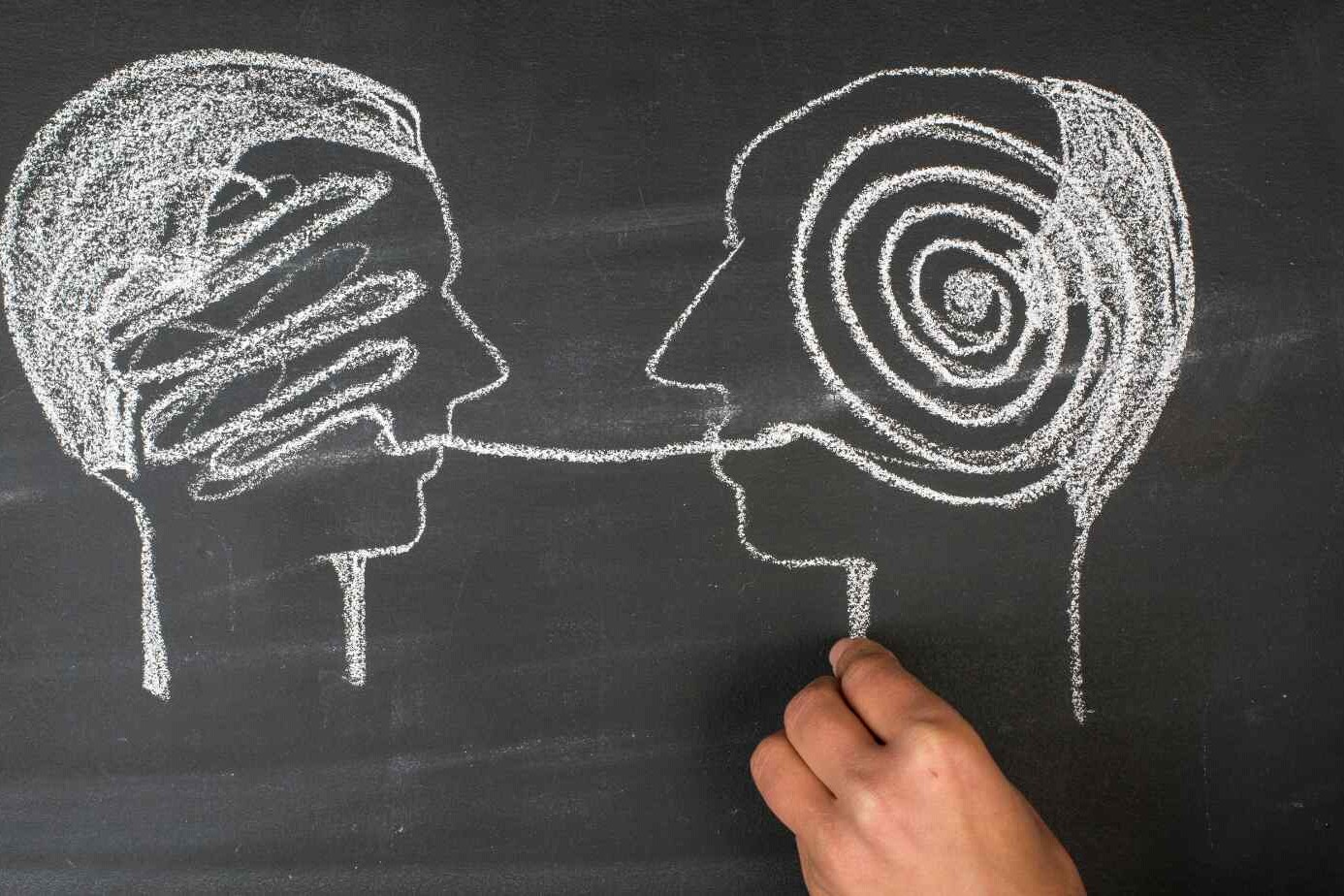Table of Contents
ToggleWhat are brain disorders?
A brain disorder refers to any condition that negatively impacts the structure or function of the brain. Some disorders develop suddenly, while others progress slowly over time. These conditions may affect:
- Memory and thinking
- Emotions and behavior
- Coordination and movement
- Senses like vision, hearing, or speech
Doctors sometimes call them central nervous system disorders because they disrupt the body’s main command system.
Examples of brain disorders and diseases include head injuries, infections, tumors, neurodegenerative diseases, and brain and mental disorders like depression or schizophrenia.
What are the different types of brain disorders?

Brain disorders come in many forms. The main categories are:
Brain injuries
One of the most prevalent conditions among brain disorders is traumatic brain injury (TBI). This happens when the brain is damaged due to a fall, accident, or sports injury.
- Mild TBI, also called a concussion, may cause headaches, dizziness, and trouble concentrating.
- Severe injuries can lead to loss of consciousness, paralysis, or long-term stroke and brain damage.
Even after recovery, some people continue to have memory problems or mood changes.
Brain tumors
A brain tumor arises when abnormal cells proliferate within the brain. Tumors may be:
- Benign (non-cancerous): grow slowly and may not spread.
- Malignant (cancerous): grow quickly and may spread to other tissues.
Symptoms depend on the tumor’s location. For example:
- Tumors near the vision center can cause blurred sight.
- Tumors pressing on motor areas may lead to weakness or seizures.
Treatments include surgery, chemotherapy, or radiation. New therapies, like targeted drugs and immunotherapy, are showing promise.
Neurodegenerative diseases
These conditions are classified as brain disorders and diseases that progressively damage brain cells. They are often linked with aging but can happen earlier in life.
- Alzheimer’s disease and dementia: cause memory loss, confusion, and behavior changes. Dementia ranks among the primary causes of disability in the elderly.
- Parkinson’s disease: damages the part of the brain that controls movement, leading to tremors, stiffness, and slow actions.
- Multiple sclerosis: occurs when the immune system attacks the protective covering of nerves (myelin), leading to weakness, vision problems, and fatigue.
Unfortunately, these neurodegenerative diseases currently have no cure, but treatments can improve quality of life.
Mental health disorders
When people hear the term brain and mental disorders, they often think of depression or anxiety. These are called neuropsychiatric conditions, and they are very common.
They include:
- Depression
- Anxiety disorders
- Bipolar disorder
- Schizophrenia
- Substance use disorders
Although these do not damage brain tissue in the same way as a stroke or tumor, they deeply affect mood, behavior, and daily living. Early treatment with therapy and medication can help people recover.
What are the risk factors for brain disorders?

Not everyone develops a brain disorder disease, but certain factors make it more likely.
- Genetics: Some genetic brain disorders are passed from parents, such as Huntington’s disease or certain epilepsies.
- Age: Elderly individuals face a greater risk of developing Alzheimer’s disease, dementia, Parkinson’s disease, as well as experiencing strokes and brain damage.
- Lifestyle: Smoking, heavy alcohol use, poor diet, and lack of physical activity all increase the chance of developing brain diseases.
- Infections: Both viral and bacterial infections can lead to brain inflammation, meningitis, or encephalitis.
- Injuries: Accidents, falls, or repeated sports injuries may lead to traumatic brain injury.
Some risk factors, like genetics, cannot be controlled. However, making healthy lifestyle choices can reduce this risk.
How are brain disorders diagnosed?
Doctors use several tools to identify brain disorders and diseases. The process starts with a detailed medical history and physical exam. Then, depending on symptoms, the following tests may be done:
- Imaging scans (CT or MRI): Show tumors, strokes, or internal injuries.
- EEG (electroencephalogram): This procedure records brain activity to diagnose conditions such as epilepsy and seizures.
- Blood tests: Detect infections, immune disorders, or chemical imbalances.
- Neuropsychological tests: Check memory, attention, speech, and problem-solving.
- Spinal tap (lumbar puncture): Looks for infections or bleeding.
Getting the right diagnosis early is important because treatments are most effective when started early. For example, people with multiple sclerosis may live much better lives with early medication.
What’s the long-term outlook?
The outlook for people with brain diseases depends on the type, severity, and timing of treatment.
- Traumatic brain injury: Mild cases heal fully, but severe cases may cause lasting disability.
- Brain tumor: Outlook depends on whether it is benign or malignant, and how early it is treated.
- Alzheimer’s disease and dementia: Progresses slowly but steadily, requiring long-term care.
- Parkinson’s disease: Symptoms worsen over time, but medication can help.
- Epilepsy and seizures: With appropriate treatment, many patients can lead normal lives.
- Stroke and brain damage: Some patients recover fully, while others may have lifelong disability.
Medical research is advancing, with new drugs and therapies offering hope. Rehabilitation, therapy, and lifestyle changes also play a major role in improving outcomes.
The Bottom Line
Our brain is both powerful and fragile. Brain disorders and diseases can strike anyone, from children to older adults. They may affect memory, mood, movement, or even survival. While some are temporary, others are lifelong and progressive.
The best defense is awareness, knowing the signs, getting timely diagnosis, and seeking treatment early. If you ever notice sudden headaches, memory loss, seizures, or unusual behavior, don’t ignore it. Getting help quickly may save brain function and even life itself.
FAQs
What are the brain disorders?
Brain disorders and diseases include injuries, tumors, infections, neurodegenerative diseases, and brain and mental disorders. They affect thinking, movement, memory, and emotions, disrupting the brain’s ability to control the body’s essential functions.
What is the most common brain disability?
The most prevalent brain disorder that results in disability is stroke. It damages brain cells by cutting off blood supply, often leaving lasting problems like weakness, speech difficulty, or memory loss.
How do I know I have a brain disorder?
Signs of a brain disorder disease may include memory loss, seizures, confusion, mood swings, or movement problems. If symptoms appear suddenly or worsen, immediate medical evaluation is important for diagnosis.
Is ADHD a brain disorder?
Yes. ADHD is a neuropsychiatric condition classified under brain and mental disorders. It affects focus, attention, and behavior control. Diagnosis and treatment can help people manage symptoms and live normal lives.
What are the 7 types of mental disorders?
The brain disorders list for mental health includes depression, anxiety disorders, bipolar disorder, schizophrenia, eating disorders, personality disorders, and substance use disorders. Each has different symptoms but impacts thoughts, feelings, and behavior.
What brain disorders cause death?
Serious brain diseases that can lead to death include malignant brain tumor, massive stroke and brain damage, severe epilepsy and seizures, and late-stage neurodegenerative diseases like Alzheimer’s disease and dementia.
What is the rarest brain disorder?
Some of the rarest brain disorders are Alien Hand Syndrome, Fatal Familial Insomnia, and Rasmussen’s encephalitis. These conditions are extremely uncommon but have severe, life-altering effects on brain function.
What are genetic brain disorders?
Genetic brain disorders are inherited conditions passed through families. Examples include Huntington’s disease, Fragile X syndrome, and some forms of epilepsy and seizures. They occur due to changes in DNA affecting brain function.
About The Author

This article is medically reviewed by Dr. Chandril Chugh, Board-Certified Neurologist, providing expert insights and reliable health information.
Dr. Chandril Chugh is a U.S.-trained neurologist with over a decade of experience. Known for his compassionate care, he specializes in treating neurological conditions such as migraines, epilepsy, and Parkinson’s disease. Dr. Chugh is highly regarded for his patient-centered approach and dedication to providing personalized care.
→ Book a consultation to discover which remedies suit your needs best.




